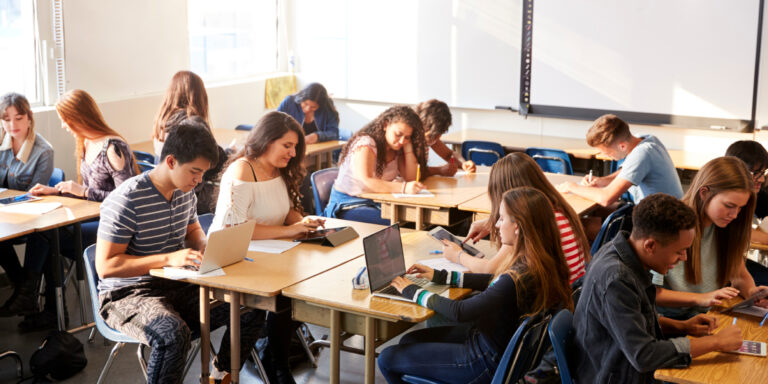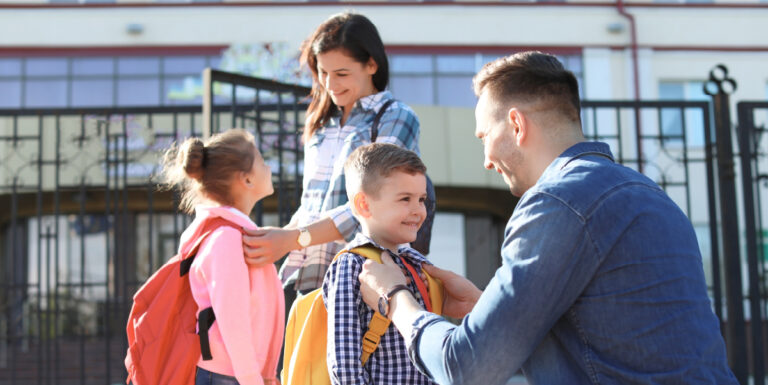The 2017 EdChoice Yearbook Superlatives
The EdChoice team has put in its votes for this year’s educational choice yearbook superlatives, and these are our winners. Enjoy.
Most Empowering
Indiana’s Choice Scholarship Program
Our team weighed purchasing power, funding stream stability and the ability of parents to use their funds flexibly to determine the educational choice program that empowers the most families.
Nevada’s Education Savings Accounts would be the most empowering program in America, but because of lingering funding issues post-litigation, the program is still—more than a year later—not serving families. So this year, our team chose to elect the Most Empowering program out of operating programs that are currently helping families.
The winner in 2017? Indiana’s Choice Scholarship Program.
Indiana’s program is helping more families than any other voucher or ESA program in terms of participation, and it has rather wide eligibility with more than 607,000 students eligible statewide. Data show the average per-student funding of Indiana’s voucher program is $4,024, or 42 percent of public school per-student spending. Notably, many choice programs have caps that leave many applicants unable to access funds, and some programs require the state legislature revisit whether they remain funded every single year during the budgeting process. What sets Indiana apart is its guaranteed purchasing power, meaning its funding stream is secure, and any eligible student who applies will receive a voucher. Parents don’t have to worry from one year to the next.
Because Indiana’s voucher program is limited in terms of parents’ ability to spend their funds flexibly, we’ve chosen to give honorable mention to an aptly named runner-up: Arizona’s Empowerment Scholarship Accounts.
Education savings accounts (ESAs) allow parents to withdraw their children from public district or charter schools and receive a deposit of public funds into government-authorized savings accounts with restricted, but multiple, uses. Those funds—often distributed to families via debit card—can cover private school tuition and fees, online learning programs, private tutoring, community college costs, higher education expenses and other approved customized learning services and materials.
Arizona’s ESAs beat out other ESA programs like those in Florida, Mississippi and Tennessee based on two key factors:
- Arizona’s ESA program has broader eligibility, so it can empower more families.
- It is guaranteed funding. For instance, Florida’s average ESA funding amount is lower ($8,840) than Arizona’s projected amount ($12,209). And Florida’s funding is not guaranteed for all eligible students—only for those who get in before the funding cap is reached. Arizona’s program does not have a funding cap.
Most Well-Rounded Policy
Nevada Education Savings Accounts
We define a well-rounded program by examining three aspects: eligibility, guaranteed funding and flexibility.
Nevada’s ESA program design makes it nearly universal in terms of eligibility with strong funding at 90 or 100 percent of the state’s per-pupil spending in public schools.
Nevada’s ESAs also allow parents to spend their education dollars to customize their children’s education using multiple learning options, whereas many other strong programs allow funds to pay only private school tuition. With Nevada’s ESAs, not only can students receive up to 100 percent of the state’s per-pupil allocation for kids in public schools, but parents also may use their ESA dollars to customize their children’s education well beyond simply paying private school tuition.
(It is important to note the Nevada ESA program’s funding stream is still unresolved, but things are looking up. Gov. Brian Sandoval said in his 2017 State of the State Address that he would seek $60 million to fund the program, which has enrolled more than 8,000 students, so advocates have good reason to expect it to be sorted out this session.)
Most Popular
Louisiana’s Tuition Donation Rebate Program
This year, we defined the Most Popular program not by sheer 2017 student participation numbers, but rather by biggest percentage growth in participation over the past year. Using that calculation, Louisiana’s Tuition Donation Rebate Program, a tax-credit scholarship program for students from low-income households, is the clear winner. Although this program’s raw participation numbers are still low relative to other school choice programs, its participation grew by 1,132 percent between the 2014–15 to 2015–16 school years—beating out Arizona’s Lexie’s Law for Disabled and Displaced Students Tax Credit Scholarship Program (134%) and Virginia’s Education Improvement Scholarships Tax Credits Program (115%) for first place.
Most Improved
Ohio’s Income-Based Scholarship Program
The Florida Tax Credit Scholarship Program had its income limit increased from 185 percent of poverty to 260 percent of poverty by the Florida legislature, resulting in a 24 percent increase in the number of families with children who are income-eligible for a tax-credit scholarship in the state. Ohio’s Income-Based Scholarship Program was the only other program to see an eligibility expansion last year, and it was a modest one at that. The Ohio legislature designed the program so a new grade level is eligible each year, which this year opened up the state’s vouchers to third graders. In the past few years, no state has drastically increased its existing programs’ eligibility, which makes the case for states starting big when designing eligibility for new educational choice programs.
Biggest Setback
Louisiana Scholarship Program
The negative test score results that came out of Louisiana’s school voucher program gave the school choice movement its Biggest Setback of 2016. Choice opponents leapt at the chance to condemn all school choice programs based on Louisiana’s results, despite the 16 other studies (conducted to date) that find either positive or neutral results for students in other school choice programs across the country. In reality, Louisiana voucher student test scores did improve after students’ second year in the program, and we expect further data to be released this year. To learn more about that report and what many experts think contributed to the negative results, check out “Education Market Failure? The Cost of Regulations on Private School Choice Programs.”
Best New Program
South Dakota – Partners in Education Tax Credit Program
Last year, the states enacted only two new educational choice programs: Maryland’s vouchers and South Dakota’s tax-credit scholarships. South Dakota won Best New Program of 2016 not just because more students are eligible than Maryland’s program, but also because of its unique testing mandate that puts the power to choose which state or national tests students take into the hands of parents. This regulatory choice is the first of its kind in America. Though South Dakota’s program has a lot of room to improve, the EdChoice team admires the state’s innovative, parent-centric approach to testing.
Biggest Legal Challenge
Duncan v. State of Nevada and Lopez v. Schwartz
Nevada created an education model for the nation in 2015 when it passed into law an education savings account program under which more than 96 percent of all K–12 students are eligible for ESA funding (90–100 percent of the state’s average education funding for each child). As our Vice President of Programs Leslie Hiner said, “This currently is the most sustainable, inclusive, equitable educational choice program in the country.”
Since then, Nevada ESAs have remained unable to operate for more than 8,000 applicant families because of litigation. Choice opponents in Nevada filed two lawsuits against Nevada’s nearly universal ESAs and the Nevada Supreme Court heard and ruled on both cases in 2016. Ultimately, the court upheld the program’s constitutionality but found its funding stream inadequate. Choice advocates are in the process of determining a new funding stream, and Gov. Brian Sandoval is eager to get it sorted this legislative session, according to his 2017 State of the State Address.
Get more details on this huge legal challenge on our blog here.
Most Likely to Succeed in 2017
Iowa
Our team expects Iowa will be the state most likely to succeed in creating a new educational choice program with strong policy design this year. Iowa Gov. Terry Branstad is a strong school choice supporter. At a National School Choice Week rally in Iowa this week, he said,
“Both houses of the Legislature have said they want to make this [expanding educational choice] a priority…We want to continue to provide funding for public education, but we also want to recognize that a lot of families want to have the choice of sending their children to nonpublic schools, home-schooling or virtual academies. We want to make sure all those choices are available, and are as affordable as possible.” -Iowa Gov. Terry Branstad
In the past, he also has signed an expansion to the state’s existing tax-credit scholarship program while in office. It is very likely the state legislature will consider a statewide ESA program this session.
OTHER STATES TO WATCH FOR NEW PROGRAMS IN 2017
Arkansas
Kentucky
Missouri
New Hampshire
Ohio
Pennsylvania
Texas
West Virginia
To see how the EdChoice team, formerly the Friedman Foundation for Educational Choice, voted last year and how close we were with our predictions, visit The 2016 School Choice Yearbook Superlatives.




